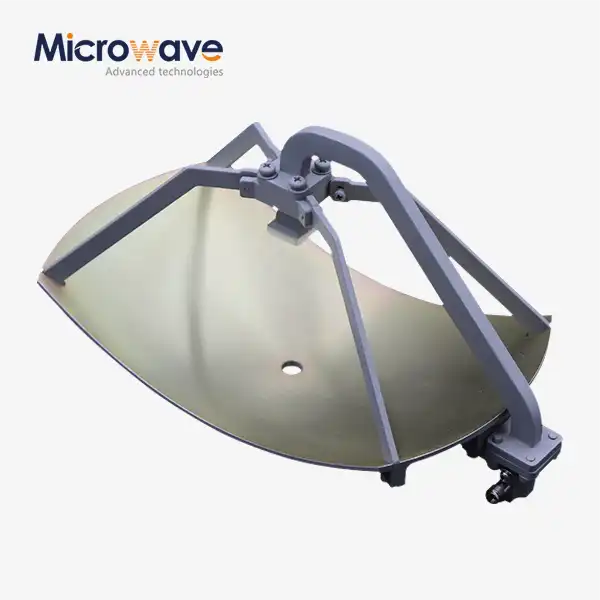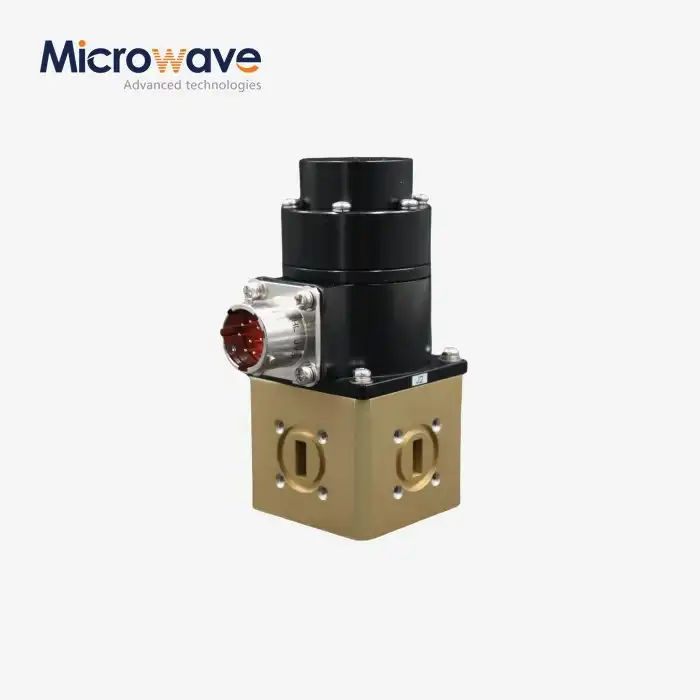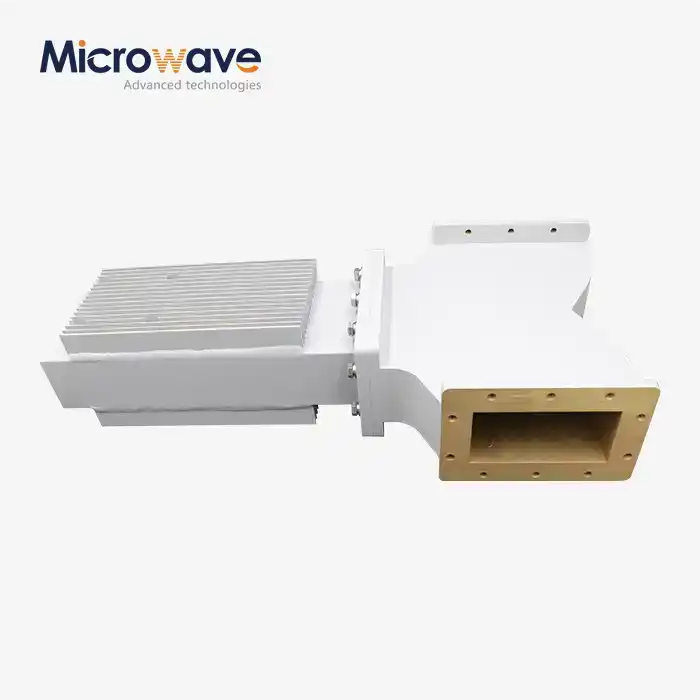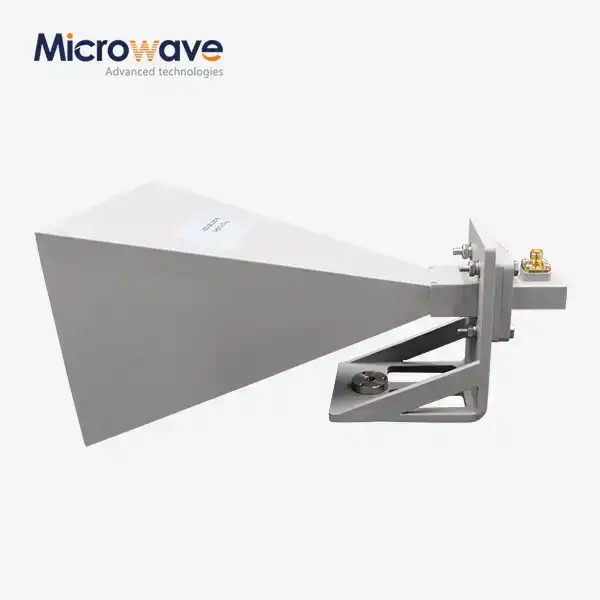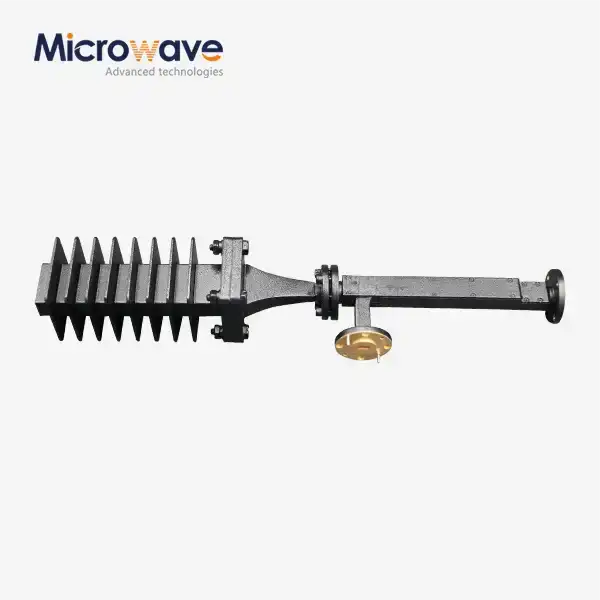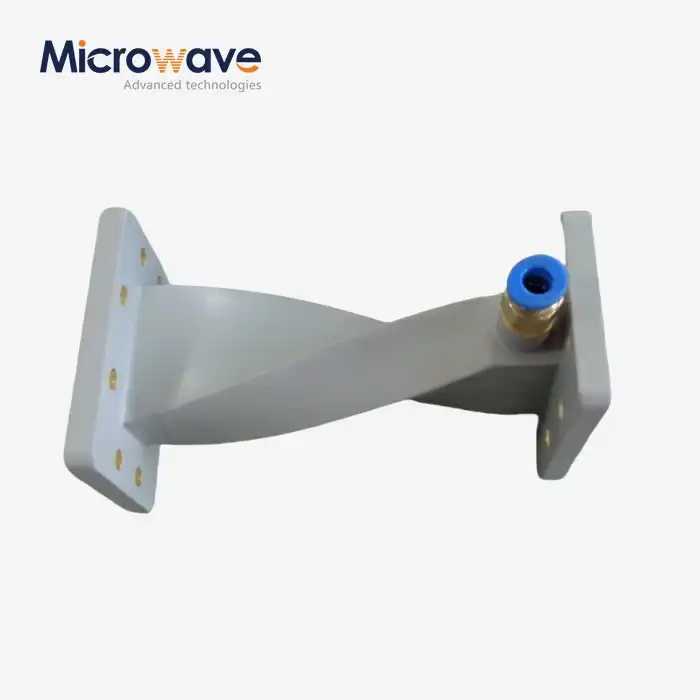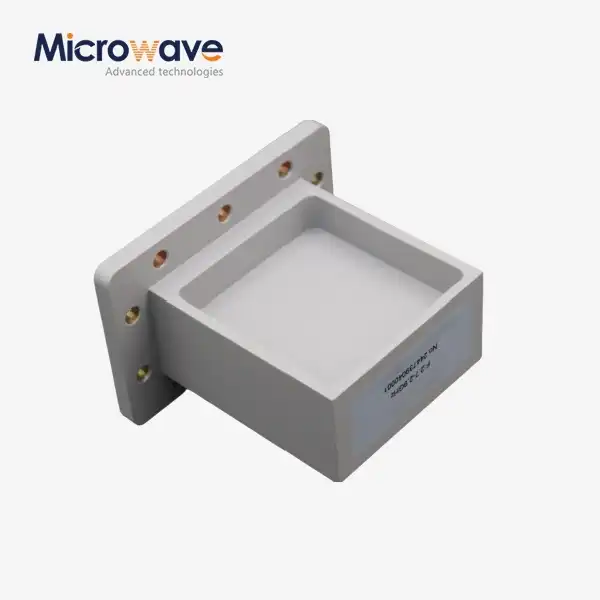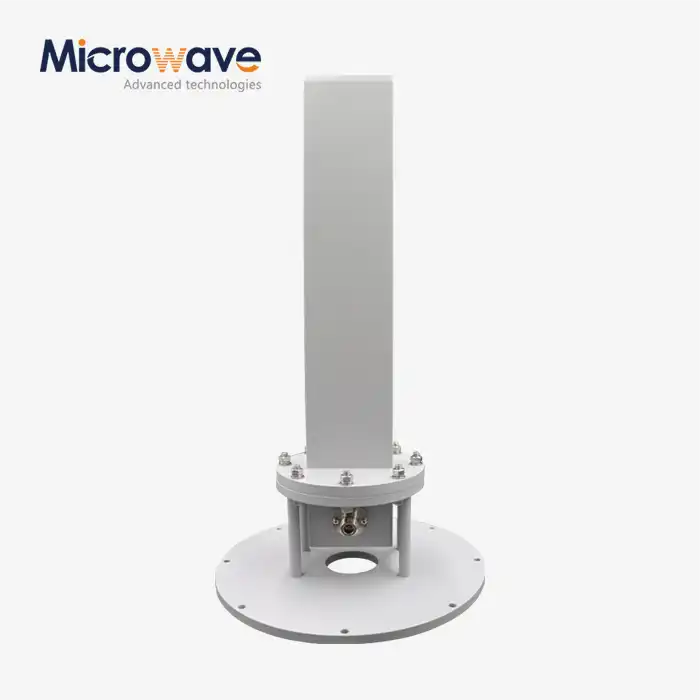How Waveguide Electric Switches Reduce Insertion Loss in RF Networks?
RF network engineers face a critical challenge that directly impacts system performance and operational costs: excessive insertion loss compromising signal integrity and reducing transmission efficiency. When dealing with high-frequency applications such as satellite communications, radar systems, and 5G networks, even minimal signal degradation can result in significant performance penalties. The Waveguide Electric Switch emerges as a superior solution, offering precise electromagnetic wave control with minimal signal loss, ensuring optimal transmission quality across demanding RF applications where traditional switching methods fall short.
Understanding Waveguide Electric Switch Technology in RF Networks
The fundamental principle behind how Waveguide Electric Switches achieve superior performance lies in their advanced electromagnetic design and precise engineering. Unlike conventional mechanical switches that rely on physical contact mechanisms, a Waveguide Electric Switch employs sophisticated electromechanical actuation systems that control electromagnetic wave propagation within precisely manufactured waveguide structures. This innovative approach eliminates many sources of insertion loss commonly associated with traditional switching technologies. Modern Waveguide Electric Switch designs incorporate advanced materials engineering and precise dimensional control to minimize signal reflections and maximize transmission efficiency. The internal switching mechanism operates through carefully calibrated electrical signals that control integrated switching elements within the waveguide structure. This design approach ensures that electromagnetic energy flows smoothly through the switch without encountering the impedance mismatches and contact resistance issues that plague conventional switching solutions.

Advanced Materials and Manufacturing Precision
The construction of high-performance Waveguide Electric Switch units requires premium-grade materials specifically selected for their electromagnetic properties and environmental durability. Advanced manufacturing techniques ensure precise dimensional tolerances that maintain optimal electromagnetic coupling throughout the switching process. The waveguide walls are typically fabricated from high-conductivity materials and often feature specialized surface treatments to minimize ohmic losses. Manufacturing precision plays a crucial role in minimizing insertion loss, as even minor dimensional variations can create impedance discontinuities that reflect electromagnetic energy back toward the source. Modern Waveguide Electric Switch manufacturing employs computer-controlled machining and advanced quality control systems to ensure every component meets stringent electrical performance specifications. This attention to detail directly translates into superior insertion loss performance compared to less precisely manufactured alternatives.
Mechanisms of Insertion Loss Reduction in Waveguide Electric Switches
The superior insertion loss performance of Waveguide Electric Switch technology stems from multiple complementary design factors that work together to minimize signal degradation. Primary among these is the elimination of physical contact interfaces that introduce resistance and impedance variations in traditional switching mechanisms. Instead, the Waveguide Electric Switch employs non-contact switching principles that maintain consistent electromagnetic characteristics throughout the switching process. Impedance matching represents another critical factor in achieving low insertion loss performance. Advanced Waveguide Electric Switch designs incorporate sophisticated impedance transformation networks that ensure smooth electromagnetic transitions between different switching states. These networks are carefully optimized using electromagnetic simulation tools to minimize reflections and maximize power transfer efficiency across the entire operational frequency range.
Electromagnetic Field Control and Optimization
The internal field distribution within a Waveguide Electric Switch is carefully controlled through precise dimensional engineering and strategic placement of switching elements. Unlike coaxial or microstrip transmission lines, waveguide structures naturally support specific electromagnetic modes with minimal dispersion and loss characteristics. The Waveguide Electric Switch leverages these inherent advantages while introducing switching functionality without compromising the fundamental electromagnetic properties. Advanced field simulation techniques enable engineers to optimize the internal geometry of Waveguide Electric Switch designs for minimum insertion loss across specified frequency ranges. These simulations account for complex electromagnetic interactions between the switching mechanism and the surrounding waveguide structure, ensuring that the final product delivers predictable and repeatable performance characteristics essential for demanding RF applications.
Technical Advantages and Performance Characteristics
Waveguide Electric Switch technology delivers exceptional performance across multiple critical parameters that directly impact RF system effectiveness. The insertion loss characteristics typically range from 0.1 to 0.5 dB across operational frequency bands, representing a significant improvement over alternative switching technologies. This performance advantage becomes increasingly important at higher frequencies where signal power is expensive and system efficiency directly impacts operational costs. The frequency response of modern Waveguide Electric Switch designs extends from lower microwave frequencies through millimeter-wave bands, supporting applications from traditional satellite communications through emerging 5G and future 6G technologies. This broad frequency coverage, combined with excellent insertion loss performance, makes the Waveguide Electric Switch an ideal choice for multi-band and broadband applications requiring consistent performance across extended frequency ranges.
Reliability and Environmental Performance
Environmental durability represents a critical advantage of Waveguide Electric Switch technology, particularly for aerospace, defense, and outdoor telecommunications applications. The robust mechanical construction and sealed waveguide environment protect sensitive switching elements from environmental contaminants that could degrade performance over time. This environmental immunity directly contributes to maintaining low insertion loss performance throughout the product lifecycle. Thermal stability ensures that Waveguide Electric Switch performance remains consistent across wide temperature ranges encountered in demanding applications. Advanced materials engineering and thermal management techniques prevent temperature-induced dimensional changes that could affect electromagnetic performance. This thermal stability is particularly important for space-based applications where extreme temperature variations would compromise the performance of less robust switching technologies.

Application-Specific Benefits Across Industries
Satellite communication systems represent one of the most demanding applications for Waveguide Electric Switch technology, where insertion loss directly impacts link budgets and communication capacity. In geostationary satellite applications, every decibel of insertion loss translates into reduced communication capacity or increased power requirements. The superior insertion loss performance of Waveguide Electric Switch technology enables more efficient satellite communication systems with extended coverage and improved signal quality. Defense and aerospace applications benefit significantly from the combination of low insertion loss and high reliability offered by Waveguide Electric Switch technology. Radar systems require precise control of electromagnetic energy with minimal losses to maximize detection range and target discrimination capabilities. The fast switching speeds and excellent isolation characteristics of modern Waveguide Electric Switch designs enable advanced radar techniques such as electronic beam steering and adaptive signal processing.
Telecommunications Infrastructure Optimization
Modern telecommunications infrastructure increasingly relies on high-frequency technologies that demand exceptional switching performance. 5G base stations and millimeter-wave communication systems require switching solutions that maintain signal integrity while providing flexible signal routing capabilities. The Waveguide Electric Switch technology addresses these requirements through superior insertion loss performance combined with excellent isolation between switching ports. The scalability of Waveguide Electric Switch technology enables its application in large-scale telecommunications installations where multiple switches work together to create complex signal routing matrices. The consistent performance characteristics and predictable insertion loss specifications simplify system design and enable accurate link budget calculations essential for reliable telecommunications network planning.
Conclusion
Waveguide Electric Switch technology represents the optimal solution for RF networks requiring minimal insertion loss and maximum signal integrity. Through advanced electromagnetic design, precision manufacturing, and superior materials engineering, these switches deliver unmatched performance across critical applications spanning satellite communications, defense systems, and modern telecommunications infrastructure. The combination of low insertion loss, excellent reliability, and broad frequency coverage positions Waveguide Electric Switch technology as the preferred choice for demanding RF applications.
Cooperate with Advanced Microwave Technologies Co., Ltd.
Advanced Microwave Technologies Co., Ltd stands as a leading China Waveguide Electric Switch manufacturer with over 20 years of specialized experience in microwave technology development. As a premier China Waveguide Electric Switch supplier, we operate advanced manufacturing facilities equipped with cutting-edge measurement equipment supporting frequencies up to 110 GHz, ensuring superior product quality and performance verification. Our ISO-certified production processes and comprehensive quality management systems guarantee that every High Quality Waveguide Electric Switch meets the most stringent industry standards.
Our position as a trusted China Waveguide Electric Switch factory enables us to offer competitive Waveguide Electric Switch price options while maintaining uncompromising quality standards. We provide complete OEM services including customization, technical support, and global delivery, making our Waveguide Electric Switch for sale ideal for diverse applications. As a leading China Waveguide Electric Switch wholesale provider, we support businesses of all sizes with prototyping, technical assistance, and efficient manufacturing processes. Contact us at craig@admicrowave.com for inquiries and save this resource for future reference.
FAQ
Q: What frequency range do Waveguide Electric Switches typically support?
A: Modern Waveguide Electric Switches operate from 0.5 GHz to 110 GHz, covering microwave through millimeter-wave frequencies for diverse applications.
Q: How much insertion loss can be expected from a quality Waveguide Electric Switch?
A: High-quality Waveguide Electric Switches typically achieve insertion losses between 0.1 to 0.5 dB across their operational frequency range.
Q: What makes Waveguide Electric Switches superior to coaxial switches for RF applications?
A: Waveguide Electric Switches offer lower insertion loss, higher power handling capability, and better isolation compared to coaxial alternatives, especially at higher frequencies.
Q: Are Waveguide Electric Switches suitable for harsh environmental conditions?
A: Yes, they feature robust construction with sealed waveguide environments that protect against temperature variations, humidity, and other environmental factors.
References
1. "Microwave Engineering: Fundamentals and Applications" by Robert J. Weber, Institute of Electrical and Electronics Engineers Press
2. "RF and Microwave Switch Technology" by David M. Pozar, Microwave and RF Engineering Society
3. "Waveguide Components and Network Analysis" by Thomas H. Lee, IEEE Microwave Theory and Techniques Society
4. "High-Frequency Switching Systems Design" by Jennifer M. Chen, International Association of Microwave Engineers




